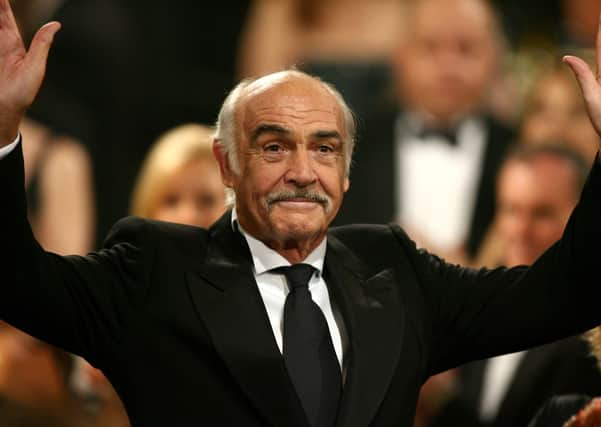Sean Connery’s cinematic legacy goes far beyond James Bond: Tony Earnshaw


In the early 70s the film director John Huston was nursing a long-held ambition to make a movie of Rudyard Kipling’s short story The Man Who Would be King. He had been defeated in the late 50s: his desired pairing of Humphrey Bogart and Clark Gable collapsed when Bogart died. There then followed a plethora of pairings, all of them on paper. The names included Brando, Burton, and Connery but the project always seemed out of reach. Paul Newman, in conversation with Huston, came up with a succinct solution: “For Chrissakes John, get Connery and Caine!”
And indeed they did come together in arguably the best film in either of their careers, a tremendous piece of high adventure with two stars respectful of each other and utterly inhabiting the story.
Advertisement
Hide AdAdvertisement
Hide AdI was reminded of this anecdote on hearing of Connery’s death last weekend. Perhaps inevitably the news reaction was focused on his tenure as 007. But it is worth reflecting on Connery’s own disenchantment with the role, which began as early as 1965.
Connery was only in his mid-30s when he began looking for a way out from what he felt was restrictive typecasting. And the early indications are there with movies like The Hill. By the 1970s and the valedictory Diamonds are Forever he was free to explore new directions and new characterisations.
In that respect the 1970s represented Connery’s golden era via a trio of classic films with exceptionally fine performances: Robin and Marian, The Wind and the Lion and The Man Who Would be King. Yes, Connery was a star and the oft-repeated jibe was that he only ever played a version of himself whether he was a Norwegian, an Egyptian, an Arab or a Russian. But whilst Connery was a movie icon he was capable of delivering a character. Having lost his hair and dispensed with the notion of a toupee, he emerged as a mature and nuanced actor having broken free of the shackles of James Bond.
On that basis it’s perfectly possible to put together a retrospective of impressive Connery performances as well as the movies that played to wider audiences. One thing is certain: Connery’s cinematic legacy is worth more than a handful of flicks featuring a suave, purring superspy.
Advertisement
Hide AdAdvertisement
Hide AdHaving met the man I can concur that he abhorred tardiness, unprofessionalism and dissembling wastrels. Whilst he did indeed ooze charisma he lacked ego. And he was a straight shooter.
The last time I met him, he handed me a beer. I thanked him. He replied, “I didn’t buy it.” Scottish to the core.
Support The Yorkshire Post and become a subscriber today. Your subscription will help us to continue to bring quality news to the people of Yorkshire. In return, you’ll see fewer ads on site, get free access to our app and receive exclusive members-only offers. Click here to subscribe.
Comment Guidelines
National World encourages reader discussion on our stories. User feedback, insights and back-and-forth exchanges add a rich layer of context to reporting. Please review our Community Guidelines before commenting.